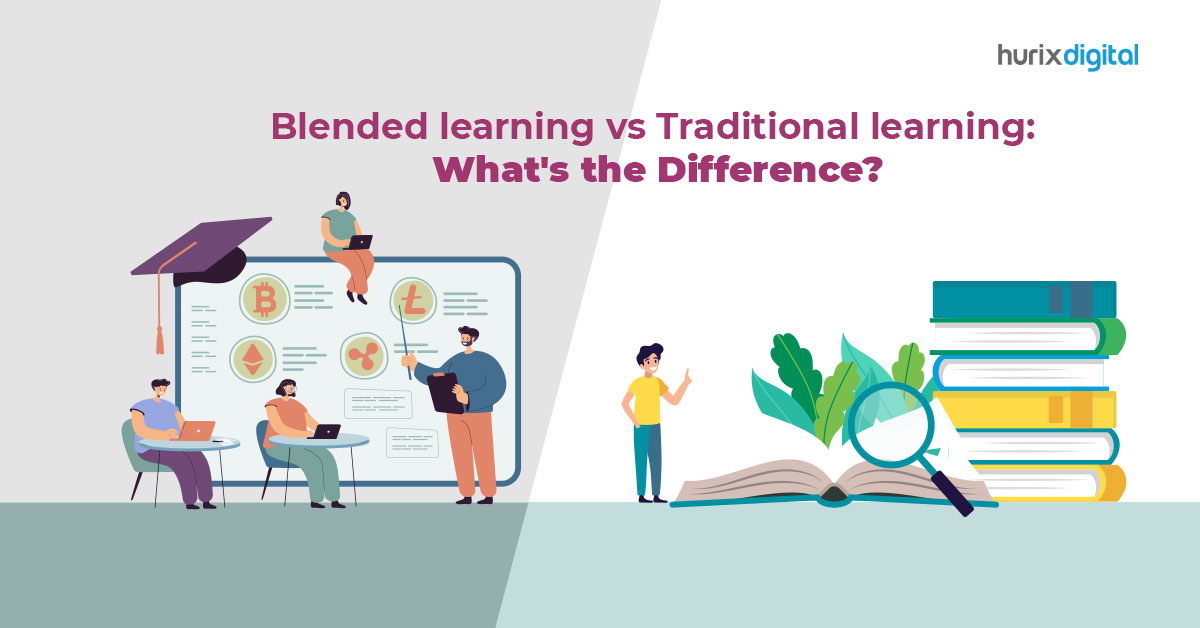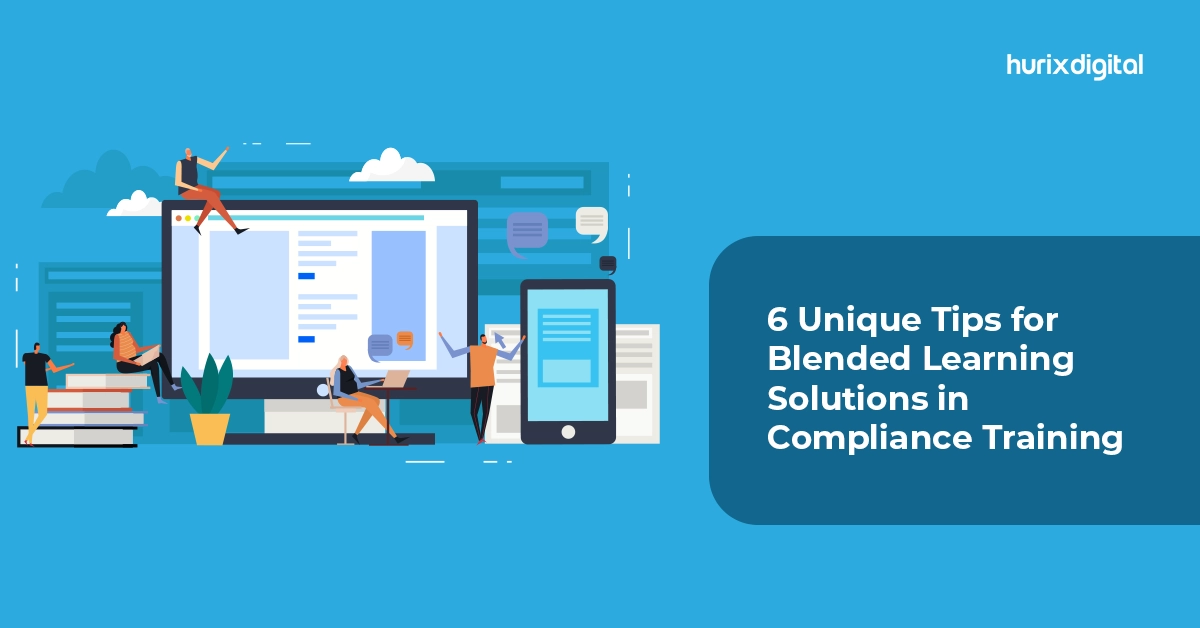
7 Steps to Designing Effective Blended Learning Courses
Summarize with:
Many organizations are now using digital resources to make their learning and development strategy better without sacrificing the benefits of instructor-led classroom interactions.
So, how to design efficient blended learning courses that are engaging, interactive, immersive, and flexible? Here, in this blog post, we discuss how to design efficient blended learning course design.
Table of Contents:
- What is Blended Learning?
- The 7 Steps of Blended Learning Courses
- Advantages of Blended Learning Courses
- Takeaway
What is Blended Learning?
Blended learning courses are a training delivery method that blends together online resources and opportunities with traditional classroom-based teaching methods. While the learners attend classroom sessions with their peers and instructor, these face-to-face practices are enriched with online activity for content and delivery.
Blended learning meaning entails the best of both worlds. On the one hand, you benefit from a synchronous learning strategy, on the other hand, you also reap the fruits of asynchronous learning and learn at your own pace and convenience.
Also Read: Everything You Need to Know About the Use of AI in Educational Assessment in 2023 and Beyond
The 7 Steps of Blended Learning Courses
Let’s see how to create a blended learning course in a few simple steps:
1. Define the Outcomes of the Course
As with any learning strategy, the first step for designing blended learning courses is to define the objectives and goals you wish to achieve from your blended learning strategy.
The following questions can help you define your goals:
- What skills do you wish to impart to your learners?
- What information should be included in the blended learning course?
- What instructional design models and instructional tools should be used to deliver new knowledge and information?
Your goals and objectives will serve as a roadmap to design your blended learning courses. At each step you will be able to see where your course is headed and the points you need to modify or cover along the way.
2. Make Outlines for the Blended Learning Course
A course outline offers benefits to all participants. The learners can use the outline to stay on track while the instructor/ course developer can use it to ensure that the blended learning course is progressing at the desired pace.
In your course outline, specify the course objectives, assignments, papers, and tests that have to be submitted, along with the deadlines that the learners have to meet. Also, mention what you expect from the learners in terms of attendance and participation. Finally, also specify the instructional tools and material that will be used to deliver blended learning content.
3. Determine the Interaction Level
A major advantage of blended learning is it provides learners with greater control over their learning. Learning is not just based on information imparted by the instructor, using both online and offline resources. Rather, learners can progress through self-paced learning activities.
When preparing your blended learning course design, determine the interaction levels of your course. How much of the learning will be imparted in the classroom and how much will take place through live online media? How much of it will be self-learning through interactive activity?
When you opt for blended learning, you gain an opportunity to choose from a wide range of online learning resources and delivery methods.
For example, your learners can assemble in a classroom or some common place and an instructor based in some other city or country can deliver a lecture using an online environment.
In fact, the choices are many and you will have to spend some time in choosing one that is ideally suited to your blended course requirements. The best way forward is to assess your modules and then see what activities can be used to effectively communicate the core ideas.
4. Integrate Group Collaboration Activities
Group collaboration is essential for holistic learning which learners cannot achieve by studying alone. Team learners allow interaction with peers, sharing of knowledge, and benefiting from the shared skills of the team.
There are different online tools and applications that you can leverage to promote group activity. For example, your group can log into a chat room to discuss a particular problem. They can share their views, ideas, opinions, and thoughts on social media platforms.
While designing an effective blended learning course, you should also create an effective social learning strategy to take learning out of the classroom and open conversations to a larger audience. These group interactions will also promote problem-solving, analyzing, and rational thinking skills.
5. Streamline Communication
With blended learning services, institutes use online learning so it becomes crucial for there to be transparency between learners and teachers so they can take up their queries more freely for better understanding. The use of emails, messaging, and other communication channels is crucial here.
This is beneficial for the instructor and the learners: the instructor doesn’t have to be in the virtual classroom round the clock, and the learners also know that they have a solid support system they can turn to in case they face any problems.
Another factor to consider is how you will gather feedback from your learners—will you conduct periodic live chats or maybe take surveys at the end of each blended learning course or module? It is very crucial that you seek regular feedback on your blended learning course to ensure it is on the right course and at the right speed.
6. List Down Resources to Support Learning
With blended learning, you have the opportunity to choose from a wealth of resources to support your courses and provide these ready references to your learners. For instance, you may provide them links to articles, presentations, and videos to delve deeper into their lesson.
Your instructors too are spared the time needed for creating their own learning resources. They can spend their valuable time in more constructive interactions with your learners. So while designing your blended learning course, it is a good idea to create a list of resources and references that you will share with your learners.
7. Create an Assessment Plan
Your blended learning courses are incomplete if they don’t include an assessment plan to check the progress of the learners. Incorporate a mix of formative assessments (quizzes, discussions) and summative assessments (projects, exams) to evaluate student understanding. Your assessment plan can include a quiz at the end of each module. Or they can be asked to summarize their learnings from a self-learning activity.
They may also be asked to participate in group discussions on chat forums. These assessments will not only help you gauge the progress of your learners but also allow them to pinpoint their areas for improvement. You could also provide a module summary at the end of each module to make it easy for them to recap the information.
Make use of online tools to monitor development and offer feedback. Ensure assessments are modified to account for various learning preferences.
Advantages of Blended Learning Courses
Blended learning courses, which combine traditional face-to-face instruction with online learning offer several benefits:
1. Personalized Learning
Personalized learning options are a top benefit of blended learning. With this method, students can study at a level that suits them and at their speed.
As online learning resources can be tailored to each learner’s requirements, they enable students to concentrate on the topics in which they need assistance. The efficacy of the educational process is increased by this customized method.
2. Improved Accessibility
Increased accessibility is one of blended learning’s key benefits. With this method, students can engage in educational endeavors and access instructional content at any time, from any location.
For students who are unavailable to attend regular classes because of scheduling or location constraints, this is quite helpful. Blended learning allows students to access educational content and take part in debates and tasks whenever it’s most convenient for them.
3. Enhanced Engagement
Increased student participation is created through the incorporation of interactive activities, and multimedia materials. As they can work together in real-world and virtual settings with classmates and teachers, blended learning promotes active engagement and makes learning more fun.
4. Promotes Knowledge Retention
Blended learning has the potential to improve information retention. When online materials and in-person interaction are combined, learning ideas are reinforced, which helps students retain and apply their information in practical settings.
5. Cost-Effective
Expenses related to traditional education, such as travel and supplies, can be decreased with blended learning. By using online platforms, educational institutions can maximize their resources and eventually increase the accessibility of education for a wider range of people.
Also Read: Embracing Open Educational Resources (OER) in Higher Education
Takeaway
While blended learning is the latest trend in delivering learning and training, it is important to get it right. As with any other new initiative that you undertake, it is a good idea to do some ground research and be organized and creative to develop effective blended learning modules.
Design effective blended learning courses with Hurix Digital. From interactive learning modules curation to implementation, we provide end-to-end courseware development solutions.
If you are facing issues in implementing or designing effective blended learning courses for your educational institution, contact our team to get help.
Summarize with:

Performance, Results, Growth, and Life-Long Learning define my professional life. I am passionate about making workplace learning planful, purposeful, and impactful. I take pride in partnering with clients and bringing them the best in learning design and creating solutions that address business challenges.
 A Space for Thoughtful
A Space for Thoughtful 




